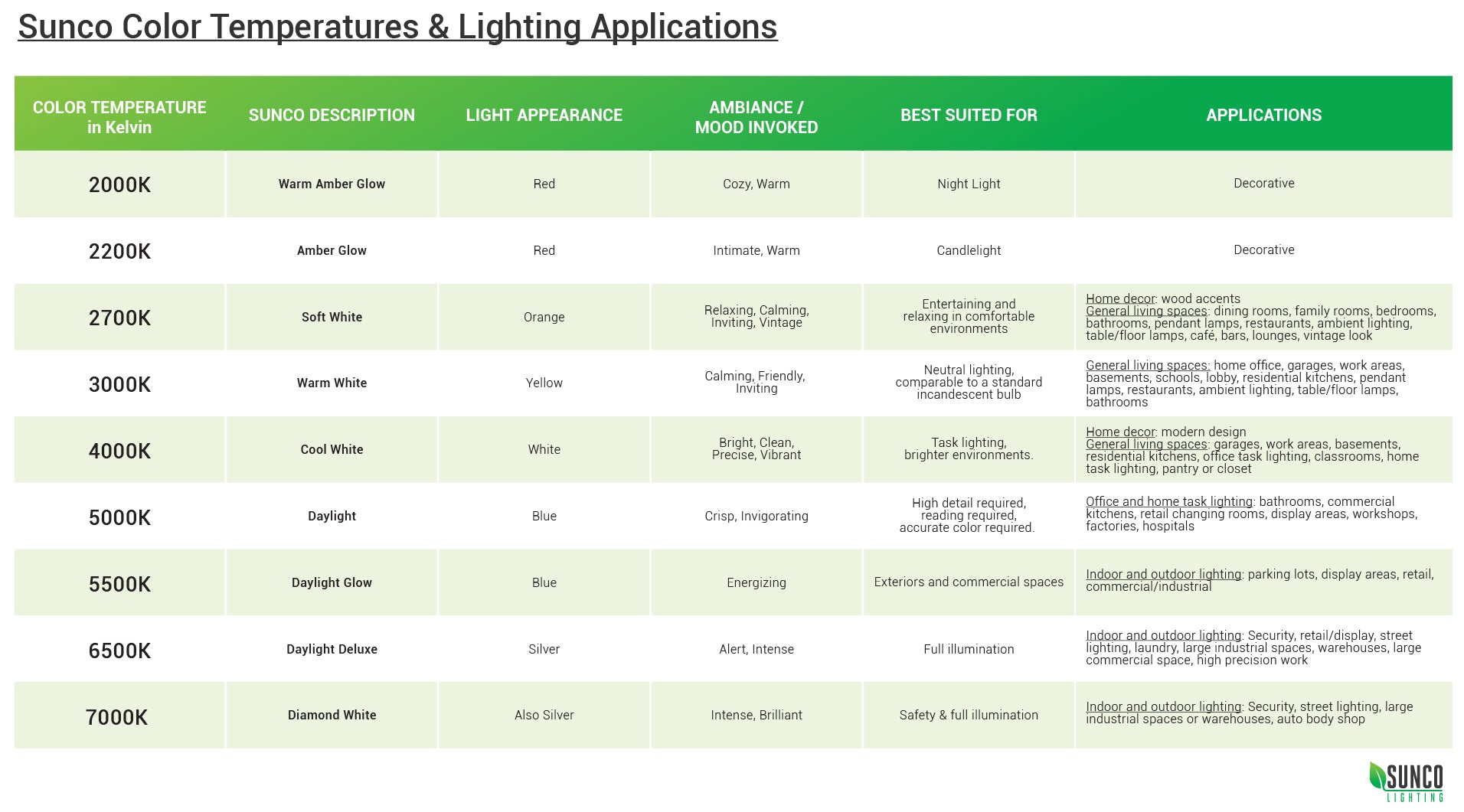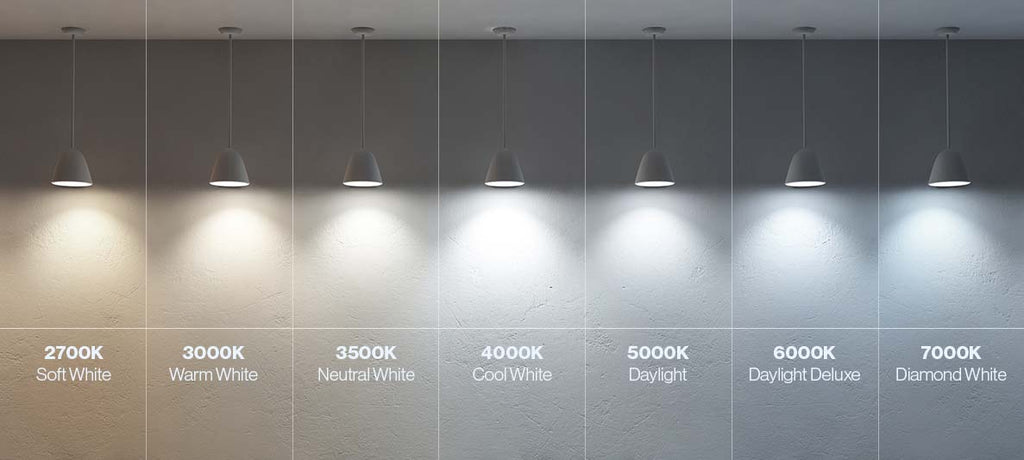Color Temperature Applications and Kelvin Levels Explained
Why is color temperature choice important? An amber glow and candlelight is not the sort of lighting you would choose to illuminate your car while you repair it or to light up a desk or office so you can work. Understanding color temperatures and the mood invoked can help solve your lighting selection concerns.
Now that a wide variety of color temperatures are available to light our businesses and homes, anyone choosing a light bulb for a particular purpose needs to understand what type of light is produced by an LED light bulb in 2700K, 5000K or even 6500K before making a purchase. The useful chart with lighting application descriptions (included below) will help you select the right light bulb and design your lighting plan to suit your unique needs.
For those struggling with color selection or if you are in need of guidance about color before tackling this task, please first check out our blogs regarding warm vs. cool light and Correlated Color Temperatures (CCT) and the visible light spectrum.
Quick Overview of Color Temperatures in Kelvin
Absolute color temperature is measured in degrees of Kelvin (K) on a scale from 1,000 to 10,000. This measurement allows you to describe the quality of a light. In commercial and residential lighting applications, Kelvin temperatures fall somewhere on a scale from 2000K to 6500K. When you want a specific look and feel in a room, it helps to choose the color temperature that best suits your project’s needs.
The lower the temperature, the warmer the look; the higher the temperature, the cooler the look.
Sunco Color Temperatures Explained
The chart below includes the color temperatures offered by Sunco with the name or description of the color, the light’s appearance, the mood or ambiance invoked with that type of light, along with which light color temperature is best suited for specific lighting applications.

Want multiple color temperature choices in a room or to change colors or swap between cool/warm tones throughout the day? We have a solution!
Sunco LED Smart Bulbs offer adjustable color temperatures (along with many other capabilities). If you are adding lighting to a modular space, such as a home office, living room, lunch and dinner restaurant or bar, or a bedroom, then the flexibility of smart bulbs is the way to go.
Sunco LED smart bulbs allow you to set lighting to a specific style. You can adjust the lighting to suit different times of day, to enrich the varied ways you use a live/workspace, and to accommodate the need to be awake first thing in the morning in a bedroom, then wind down late at night before you sleep without adding extra light fixtures for different moods.
Light Appearance, Color Temperature, and the Mood Created
Light color temperatures in the visible spectrum range from red to blue, as you can see in the chart above and in the details about Kelvin and color temperature in our Lighting 101 page. When we look at candlelight, which is a warm color temperature (around 2200K), the mood invoked is of nostalgia. You may be warmed by the light and feel content. This sense of warmth makes for an ideal decorative light.
These are the types of moods or ambiance that you can create with Sunco LED bulbs:
- 2000K – Warm Amber Glow = Cozy, Warm
- 2200K – Amber Glow = Intimate, Warm
- 2700K – Soft White = Relaxing, Calming, Inviting, Vintage Style
- 3000K – Warm White = Calming, Friendly, Inviting
- 4000K – Cool White = Bright, Clean, Precise, Vibrant
- 5000K – Daylight = Crisp, Invigorating
- 5500K – Daylight Glow = Energizing
- 6500K – Daylight Deluxe = Alert, Intense
- 7000K – Diamond White = Intense, Brilliant
A Brief Review of LED Lighting Applications
Referring to the downloadable chart above will help you determine which color temperature is appropriate for various lighting applications, when you are selecting an LED light bulb from the Sunco catalog. Simply find the application that matches your lighting plan and choose the appropriate color temperature.
For instance, say you are trying to create a relaxing and entertaining space in your dining room or family room. Based on our chart, you could go with a warmer tone with the 2000K or 2200K for decorative accents and use color temperatures ranging from 2700K to 3000K for a neutral light with a soft white or warm yellow tone.
For task lighting, we recommend you select a cooler color temperature, beginning with 4000K Cool White, 5000K Daylight and above. These color temperatures will provide you with clean and crisp lighting for high precision work. They will keep you focused and on task.
Refer to this helpful Color Temperature and Lighting Applications whenever you are choosing light bulbs to enhance your office, commercial space, or home light plan. Still unsure what is appropriate for you? Reach out to our Customer Service Specialists or bulk buyers can contact our Sales team.
1 comment
-
Posted on by Kelly PartinI am trying to find 2200k 900 luminosity 24 watt


